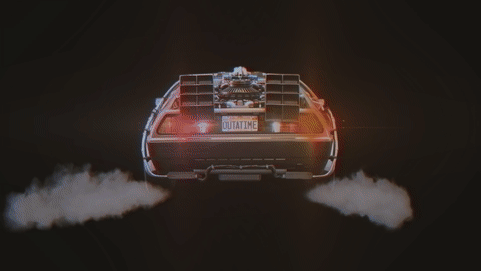Coda: Back to the Future
Introduction

Dearest readers, if you’ve made it this far by reading this book in a linear fashion, well, you might need to get out more! And if you’ve somehow just accidentally stumbled onto this page, welcome. We hope it inspires you to go and explore the other sections of this book—after all, we worked really hard on them, and it would make us sad for them to go unread.
This coda is comprised of a small collection of pieces inspired by popular contemporary web genres—trivial formats that, we hope, convey serious messages to readers about how our archival history might inspire contemporary pedagogical and research practices. We chose to compose in short-form web genres because we have been inspired by past English teachers’ attempts to teach students to compose in the media genres of their shared time periods, and we seek to continue this tradition in our scholarship. We also are committed to presenting the implications of our work in concise, popular forms that may be more accessible to K-12 classroom teachers who have limited time for scholarly reading.
We start off this section with a pair of companion listicle-style articles (complete with the dankest memes!). The first of these, “The Seven Keys to Effective Multimodal Pedagogy . . . According to Your Grandmothers,” culls some of the best teaching advice from English Journal authors. By contrast, the second listicle, titled “Can You Really Believe They Said That? How NOT to be an Old-School English Teacher,” sums up what we identify as some of the more problematic aspects of the archive.
Next, we present a YouTube-style video review with the clickbait-y title: “The 5 Weirdest Classroom Technologies You’ve Never Heard Of (Number Three Will Shock You!)” This ironically bombastic production highlights some of the more idiosyncratic technologies that came to surface in the study of our corpus, making the case that we have much to learn by revisiting some of lesser-known “failed” technologies of our instructional past.
We next encourage readers to seek out their own pedagogical inspirations in the archive by asking them to take a Buzzfeed-style personality quiz, titled “Which English Journal Author Are You?” This quiz, which is designed to match answers to the pedagogical styles and philosophies of particular English Journal contributors, will ideally help readers identify some of the more noteworthy authors in our archive whose articles they might wish to read for themselves.
Moving from implications for pedagogy to implications for research, the Coda closes with a somewhat more earnest reflection about the possibilities of our playful approach to methodology in a collaborative speech in the style of a TED Talk, called “Playing in the Archives—Lessons Learned.”
Taken together, the sections of this coda are meant to suggest a specific message for readers: the first hundred years of new media pedagogy documented in English Journal are only the start of what promises to be a much longer trajectory, one to which we are all currently giving shape in our own ways. Knowing our place along this trajectory—with its fits and starts, failures and successes, tragedies and triumphs—can help us become more mindful going forward as we think about how we might effectively, responsibly, and ethically take up the technologies of tomorrow.
